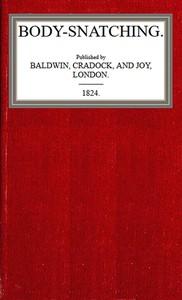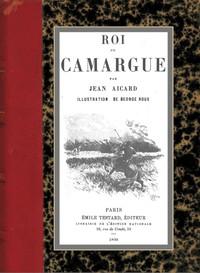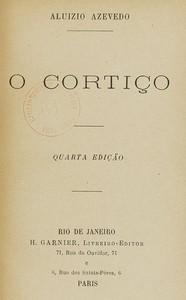|
|
Read this ebook for free! No credit card needed, absolutely nothing to pay.Words: 19264 in 2 pages
This is an ebook sharing website. You can read the uploaded ebooks for free here. No credit cards needed, nothing to pay. If you want to own a digital copy of the ebook, or want to read offline with your favorite ebook-reader, then you can choose to buy and download the ebook. an artery, and consists of a preternatural dilatation of its coats. This dilatation arises from debility of the vessel, whence, unable to resist the impetus of the blood, it yields, and is dilated into a sac. When once the disease is induced, it commonly goes on to increase with a steady and uninterrupted progress, until at last it suddenly bursts, and the patient expires either instantaneously from loss of blood, or by degrees from repeated losses. When left to itself, it almost uniformly proves fatal in one or other of these modes; yet, before the time of Galen, no notice was taken of this terrible malady. The ancients, indeed, who believed that the arteries were air tubes, could have had no conception of the existence of an aneurism. Were the number of individuals in Europe, who are now annually cured of aneurism, by the interference of art, to be assumed as the basis of a calculation of the number of persons who must have perished by this disease, from the beginning of the world to the time of Galen, it would convey some conception of the extent to which anatomical knowledge is the means of saving human life. The only way in which it is possible to cure this disease is, to produce an obliteration of the cavity of the artery. This is the object of the operation. The diseased artery is exposed, and a ligature is passed around it, above the dilatation, by means of which the blood is prevented from flowing into the sac, and inflammation is excited in the vessel; in consequence of which its sides adhere together, and its cavity becomes obliterated. The success of the operation depends entirely on the completeness of the adhesion of the sides of the vessel, and the consequent obliteration of its cavity. This adhesion will not take place unless the portion of the artery to which the ligature is applied be in a sound state. If it be diseased, as it almost always is near the seat of the aneurism, when the process of nature is completed by which the ligature is removed, hemorrhage takes place, and the patient dies just as if the aneurism had been left to itself. For a long time the ligature was applied as close as possible to the seat of the aneurism: the aneurismal sac was laid open in its whole extent, and the blood it contained was scooped out. The consequence, was that a large deep-seated sore, composed of parts in an unhealthy state, was formed: it was necessary to the cure, that this sore should suppurate, granulate, and heal: a process which the constitution was frequently unable to support. Moreover, there was a constant danger that the patient would perish from hemorrhage, through the want of adhesion of the sides of the artery. The profound knowledge of healthy and of diseased structure, and of the laws of the animal economy by which both are regulated, which John Hunter had acquired from anatomy, suggested to this eminent man a mode of operating, the effect of which, in preserving human life, has placed him high in the rank of the benefactors of his race. This consummate anatomist saw, that the reason why death so often followed the common operation was, because that process which was essential to its success was prevented by the diseased condition of the artery. He perceived that the vessel, at some distance from the aneurism, was in a sound state; and conceived that, if the ligature were applied to this distant part, that is, to a sound instead of a diseased portion of the artery, this necessary process would not be counteracted. To this there was one capital objection, that it would often be necessary to apply the ligature around the main trunk of an artery, before it gives off its branches, in consequence of which the parts below the ligature would be deprived of their supply of blood, and would therefore mortify. So frequent and great are the communications between all the arteries of the body, however, that he thought it probable, that a sufficient supply would be borne to these parts through the medium of collateral branches. For an aneurism in the ham, he, therefore, boldly cut down upon the main trunk of the artery which supplies the lower extremity; and applied a ligature around it, where it is seated near the middle of the thigh, in the confident expectation that, though he thus deprived the limb of the supply of blood which it received through its direct channel, it would not perish. His knowledge of the processes of the animal economy led him to expect that the force of the circulation being thus taken off from the aneurismal sac, the progress of the disease would be stopped; that the sac itself, with all its contents, would be absorbed; that by this means the whole tumour would be removed, and that an opening into it would be unnecessary. The most complete success followed this noble experiment, and the sensations which this philosopher experienced when he witnessed the event, must have been exquisite, and have constituted an appropriate reward for the application of profound knowledge to the mitigation of human suffering. After Hunter followed Abernethy, who, treading in the footsteps of his master, for an aneurism of the femoral, placed a ligature around the external iliac artery; lately the internal iliac itself has been taken up, and surgeons have tied arteries of such importance, that they have been themselves astonished at the extent and splendor of their success. Every individual on whom an operation of this kind has been successfully performed, is snatched by it from certain and inevitable death! The symptom by which an aneurism is distinguished from every other tumour is, chiefly, its pulsating motion. But when an aneurism has become very large, it ceases to pulsate; and when an abscess is seated near an artery of great magnitude, it acquires a pulsating motion; because the pulsations of the artery are perceptible through the abscess. The real nature of cases of this kind cannot possibly be ascertained, without a most careful investigation, combined with an exact knowledge of the structure and relative position of all the parts in the neighbourhood of the tumour. Pelletan, one of the most distinguished surgeons of France, was one day called to a man who, after a long walk, was seized with a severe pain in the leg, over the seat of which appeared a tumour, which was attended with a pulsation so violent that it lifted up the hand of the examiner. There seemed every reason to suppose that the case was an aneurismal swelling. This acute observer, however, in comparing the affected with the sound limb, perceived in the latter a similar throbbing. On careful examination he discovered that, by a particular disposition in this individual, one of the main arteries of the leg deviated from its usual course, and instead of plunging deep between the muscles, lay immediately under the skin and fascia. The truth was, that the man in the exertion of walking had ruptured some muscular fibres, and the uncommon distribution of the artery gave to this accident these peculiar symptoms. The real nature of this case could not possibly have been ascertained, but by an anatomist. The same surgeon has recorded the case of a man who, having fallen twice from his horse, and experienced for several years considerable uneasiness in his back, was at length afflicted with acute pain in the abdomen. At the same time an oval, irregularly circumscribed tumour made its appearance in the right flank. It presented a distinct fluctuation, and had all the appearance of a collection of matter depending on caries of the vertebrae. The pain was seated chiefly at the lower portion of that part of the spine which forms the back, which was, moreover, distorted; and this might have confirmed the opinion that the case was a lumbar abscess with caries. Pelletan, however, who well knew that an aneurism, as it enlarges, may destroy any bone in its neighbourhood, saw that the disease was an aneurism, and predicted that the patient must perish. On opening the body an aneurismal tumour was discovered, which nearly filled the cavity of the abdomen. If this case had been mistaken for lumbar abscess, and the tumour had been opened with a view of affording an exit to the matter, the man would have died in a few seconds. There is no surgeon of discernment and experience whose attention has not been awakened, and whose sagacity has not been put to the test, by the occurrence of similar cases in his own practice. The consequence of error is almost always instantaneously fatal. The catalogue of such disastrous events is long and melancholy. Richerand has recorded, that Ferrand, head surgeon of the Hotel-Dieu, mistook an aneurism in the armpit for an abscess; plunged his knife into the swelling, and killed the patient. De Haen speaks of a person who died in consequence of an opening which was made, contrary to the advice of Boerhaave in a similar tumour at the knee. Vesalius was consulted about a tumour in the back, which he pronounced to be an aneurism; but an ignorant practitioner having made an opening into it, the patient instantly bled to death. Nothing can be more easy than to confound an aneurism of the artery of the neck with a swelling of the glands in its neighbourhood: with a swelling of the cellular substance which surrounds the artery; with abscesses of various kinds; but if a surgeon were to fall into this error, and to open a carotid aneurism, his patient would certainly be dead in the space of a few moments. It must be evident, then, that a thorough knowledge of anatomy is not only indispensable to the proper treatment of cases of this description, but also to the prevention of the most fatal mistakes. But if there be any disease which, from the frequency of its occurrence, from the variety of its forms, from the difficulty of discriminating between it, and other maladies, and from the danger attendant on almost all its varieties, requires a combination of the most minute investigation, with the most accurate anatomical knowledge, it is that of hernia. This disease consists of a protrusion of some of the viscera of the abdomen, from the cavity in which they are naturally contained, into a preternatural bag, composed of the portion of the peritoneum which is pushed before them. It is computed that one sixteenth of the human race are afflicted with this malady. It is sometimes merely an inconvenient complaint, attended with no evil consequences whatever: but there is no form of this disease, which is not liable to be suddenly changed, and by slight causes, from a perfectly innocent state, into a condition which may prove fatal in a few hours. The disease itself occurs in numerous situations; it may be confounded with various diseases; it may exist in the most diversified states; it may require, without the loss of a single moment, a most important and delicate operation; and it may appear to demand this operation, while the performance of it may really be not only useless, but highly pernicious. The danger of hernia depends on its passing into that state which is technically termed strangulation. When a protruded intestine suffers such a degree of pressure, as to occasion a total obstruction to the passage of its contents, it is said to be strangulated. The consequence of pressure thus producing strangulation is, the excitement of inflammation: this inflammation must inevitably prove fatal unless the pressure be promptly removed. In most cases this can be effected only by the operation. Two things, then, are indispensable: first, the ability to ascertain that the symptoms are really produced by pressure, that is, to distinguish the disease from the affections which resemble it; and secondly, when this is effected, to perform the operation with promptitude and success. The distinction of strangulated hernia from affections which resemble it, often requires the most exact knowledge and the most minute investigation. The intestine included in a hernial sac may be merely affected with colic, and thus give rise to the appearance of strangulation. It may be in a state of irritation, produced, for example, by unusual fatigue; and from this cause may be attacked with the symptoms of inflammation. Inflammation may be excited in the intestine, by the common causes of inflammation, which the hernia may have no share in inducing, and of which it may not even participate. Were this case mistaken, and the operation performed, it would not only be useless, but pernicious: while the attention of the practitioner would be diverted from the real nature of the malady; the prompt and vigorous application of the remedies which alone could save the patient would be neglected, and he would probably perish. On the other hand, a very small portion of intestine may become strangulated, and urgently require the operation. But there maybe no tumor; all the symptoms may be those, and, on a superficial examination, only those, of inflammation of the bowels. Were the real nature of this case mistaken, death would be inevitable. Nothing is more common than fatal errors of this kind. It is only a few months ago, that a physician was called in haste to a person who was said to be dying of inflammation of the bowels. Before he reached the house the man was dead. He had been ill only three days. On looking at the abdomen, there was a manifest hernia; the first glance was sufficient to ascertain the fact. The practitioner in attendance had known nothing of the matter; he had never suspected the real nature of the disease, and had made no inquiry which could have led to the detection of it. Here was a case which might probably have been saved, but for the criminal ignorance and inattention of the practitioner. Whenever there are symptoms of inflammation of the bowels, examination of the abdomen is indispensable: and the life of the patient will often depend on the care and accuracy with which the investigation is made. But it is possible that inflammation may attack the parts included in the hernial sac, without arising from the hernia itself. The inflammation may be produced by the common causes of inflammation: there may be no pressure: there may be no strangulation: the swelling may be the seat, not the cause of the disease. In this case, too, the operation would be both useless and pernicious. Now all these are diversities which it is of the highest importance to discriminate. In some of them life depends on the clearness, accuracy, and promptitude, with which the discrimination is made. Promptitude is of no less consequence than accuracy. If the decision be not formed and acted on at once, it will be of no avail. The rapidity of the progress of this disease is often frightful. We have mentioned a case in which it was fatal in three days, but it not unfrequently terminates fatally in less than twenty-four hours. Sir Astley Cooper mentions a case in which the patient was dead in eight hours after the commencement of the disease. Larrey has recorded the case of a soldier in whom a hernia took place, which was strangulated immediately. He was brought to the "ambulance" instantly, and perished in two hours with gangrene of the part, and of the abdominal viscera. This was the second instance which had occurred to this surgeon of a rapidity thus appalling. What clearness of judgment, what accuracy of knowledge, what promptitude of decision, are necessary to treat such a disease with any chance of success! These observations are sufficient to show the importance of anatomy in certain surgical diseases. The state of medical opinion from the earliest ages to the present time, furnishes a most instructive proof of its necessity to the detection and cure of disease in general. The doctrines of the father of physic were in the highest degree vague and unmeaning. Every thing is resolved by Hippocrates into a general principle, which he terms nature; and to which he ascribes intelligence; which he clothes with the attribute of justice; and which he represents as possessing virtues and powers which he says are her servants, and by means of which she performs all her operations in the bodies of animals, distributes the blood, spirits, and heat, through all the parts of the body, and imparts to them life and sensation. He states that the manner in which she acts, is by attracting what is good or agreeable to each species, and retaining, preparing, and changing it: or, on the other hand, by rejecting whatever is superfluous or hurtful, after she has separated it from the good. This is the foundation of the doctrine of depuration, concoction, and crisis in fevers, so much insisted on by him and by other physicians after him; but when he explains what he means by nature, he resolves it into heat, which he says appears to have something immortal in it. The great opponent of Hippocrates was Asclepiades. He asserted that matter, considered in itself, is of an unchangeable nature: that all perceptible bodies are composed of a number of small ones, termed corpuscles, between which there are interspersed an infinity of small spaces totally void of matter: that the soul itself is composed of these corpuscles: that what is called nature is nothing more than matter and motion: that Hippocrates knew not what he said when he spoke of nature as an intelligent being, and ascribed to her various qualities and virtues: that the corpuscles, of which all bodies are composed, are of different figures, and consist of different assemblages: that all bodies contain numerous pores, or interstices, which are of different sizes: that the human body, like all other bodies, possesses pores peculiar to itself: that these pores are larger or smaller, according as the corpuscles which pass through them differ in magnitude: that the blood consists of the largest and the spirits and the heat of the smallest. On these principles Asclepiades founded his theory of medicine. He maintains that, as long as the corpuscles are freely received by the pores, the body remains in its natural state: that, on the contrary, as soon as any obstacle obstructs their passage, it begins to recede from that state: that, therefore, health depends on the just proportion between these pores and corpuscles: that, on the contrary, disease proceeds from a disproportion between them: that the most usual obstacle arises from a retention of some of the corpuscles in their ordinary passages, where they arrive in too large a number, or are of irregular figures, or move too fast or proceed too slow: that phrensies, lethargies, pleurisies, burning fevers, for example, are occasioned by these corpuscles stopping of their own accord: that pain is produced by the stagnation of the largest of all these corpuscles, of which the blood consists: that, on the contrary, deliriums, languors, extenuations, leanness and dropsies derive their origin from a bad state of the pores, which are too much relaxed, or opened: that dropsy, in particular, proceeds from the flesh being perforated with various small holes which convert the nourishment received into them into water; that hunger is occasioned by an opening of the large pores of the stomach and belly: that thirst arises from an opening of the small pores: that intermittent fevers have the same origin: that quotidian fever is produced by a retention of the largest corpuscles; tertian fever by a retention of corpuscles somewhat smaller; and quartan fever by a retention of the smallest corpuscles of all. Galen maintained that the animal body is composed of three principles, namely, the solids, the humours, and the spirits: that the solid parts consist of similar and organic: that the humours are four in number, namely, the blood, the phlegm, the yellow bile, and the black bile: that the spirits are of three kinds, namely, the vital, the animal, and the natural; that the vital spirit is a subtle vapour which arises from the blood, and which derives its origin from the liver, the organ of sanguification: that the spirits, thus formed, are conveyed to the heart, where, in conjunction with the air drawn into the lungs by respiration, they become the matter of the second species, namely, of the vital spirits; that in their turn the vital spirits are changed into the animal in the brain, and so on. Erisistratus, who was a great speculator, and whose theories had the most important influence on his practice, banished blood-letting altogether from medicine, for the following notable reasons: because, he says, we cannot always see the vein we intend to open; because we are not sure we may not open an artery instead of a vein; because we cannot ascertain the true quantity to be taken; because if we take too little, the intention is not answered; if too much, we may destroy the patient: and because the evacuation of the venous blood is succeeded by that of the spirits, which thus pass from the arteries into the veins; wherefore, blood-letting ought never to be used as a remedy in disease. Yet, though he was thus cautious in abstracting blood, it must not be supposed that he was not a sufficiently bold practitioner. In tumour of the liver, he hesitated not to cut open the abdomen, and to apply his medicines immediately to the diseased organ; but though he took such liberties with the liver, he regarded with the greatest apprehension the operation of tapping in dropsy of the abdomen: because, said he, the waters being evacuated, the liver which is inflamed and become hard like a stone, is more pressed by the adjacent parts, which the waters kept at a distance from it, whence the patient dies. One physician conceived that gout originated from an effervescence of the synovia of the joints with the vitriolated blood: whence he recommended alcohol for its cure: a remedy for which the court of aldermen ought to have voted him a medal. A more ancient practitioner who believed that the finger of St. Blasius was very efficacious "for removing a bone which sticks in the throat," maintained that gout was the "grand drier," and prescribed a remedy for it which the patient was to use for a whole year, and to observe the following diet each month: in September he must eat and drink milk; in October he must eat garlic; in November he is to abstain from bathing; in December he must eat no cabbage; in January he is to take a glass of pure wine in the morning; in February to eat no beef; in March to mix several things both in eatables and drinkables; in April not to eat horse-radish; nor in May the fish called Polypus; in June he is to drink cold water in a morning; in July to avoid venery; and lastly, in August to eat no mallows. A third physician deduced all diseases from inspissation of the fluids; hence he attached the highest importance to diluent drinks, and believed that tea, especially, is a sovereign remedy in almost every disease to which the human frame is subject: "tea," says Bentakoe, who is loudest in his praises of this panacea, and who, as Blumenback observes, 'deserved to have been pensioned by the East India Company for his services,' "tea is the best, nay, the only remedy for correcting viscidity of the blood, the source of all diseases, and for dissipating the acid of the stomach, as it contains a fine oleaginous volatile salt, and certain subtle spirits which are analogous in their nature to the animal spirits. Tea fortifies the memory and all the intellectual faculties: it will therefore furnish the most effectual means of improving physical education. Against fever there is no better remedy than forty or fifty cups of tea swallowed immediately after one another; the slime of the pancreas is thus carried off." Free books android app tbrJar TBR JAR Read Free books online gutenberg More posts by @FreeBooks
: A short sketch of the evidence for the abolition of the slave trade delivered before a committee of the House of Commons by Crafton William Bell - Speeches addresses etc. English; Slave trade Great Britain@FreeBooksThu 08 Jun, 2023

: Roi de Camargue by Aicard Jean Roux George Illustrator - French fiction 19th century@FreeBooksThu 08 Jun, 2023
|
Terms of Use Stock Market News! © gutenberg.org.in2025 All Rights reserved.






